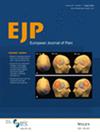Role of Latissimus Dorsi–Thoracolumbar Fascia Complex Stretching on Pain and Pain-Related Parameters in Patients With Chronic Low Back Pain: A Randomised Clinical Trial
Abstract
Background
Fascial stretching is gaining interest as a potential intervention for pain management. However, evidence regarding the effect of latissimus dorsi–thoracolumbar fascia (LD-TLF) complex stretching in patients with chronic low back pain (CLBP) remains limited. Therefore, this study aimed to investigate the effects of LD-TLF complex stretching on pain-related factors and disability in patients with CLBP.
Methods
Thirty patients with CLBP were randomly assigned to a study group (n = 15; 7 men, 8 women) and a control group (n = 15; 7 men, 8 women). The study group received 4 weeks of LD-TLF complex stretching in combination with conventional physiotherapy, while the control group received conventional physiotherapy only. Outcomes were assessed before and after the interventions, including primary measures of pain pressure thresholds (PPT) at thoracolumbar fascia levels (L1, L3 and 12th costa), and secondary measures included the Pain Sensitivity Questionnaire (PSQ), the effects of pain on daily activities measured by the Brief Pain Inventory (BPI), and disability assessed by the Oswestry Disability Questionnaire (ODQ).
Results
Pre- and post-treatment PPTs, at the L1, L3 vertebrae and 12th costa levels, demonstrated significant differences between the study group and control groups. Post-treatment thresholds were significantly higher compared to pre-treatment thresholds (p < 0.001, ηp2 = 0.67; p < 0.001, ηp2 = 0.61; p < 0.001, ηp2 = 0.74). Additionally, significant improvements were found in PSC, BPI and ODQ scores in the study group compared to the control group (p < 0.05).
Conclusion
The results of this study suggest that stretching the LD-TLF complex may be a beneficial addition to the conventional physiotherapy approach for patients with CLBP. Specifically, LD-TLF complex stretching, when used in combination with conventional physiotherapy, appears to provide improved pain thresholds, decreased pain sensitivity and pain during activity, as well as reduced disability compared to conventional physiotherapy alone in patients with CLBP.
Significance Statement
Chronic low back pain (CLBP) is a multifactorial condition, with the thoracolumbar fascia increasingly recognized as a potential contributing factor. This study suggests that stretching the latissimus dorsi-thoracolumbar fascia complex in combination with conventional physiotherapy, enhances pain thresholds, reduces pain sensitivity, and decreases disability in individuals with CLBP. Incorporating fascia-specific interventions into CLBP treatment programs could offer significant benefits for both patients and clinicians.


 求助内容:
求助内容: 应助结果提醒方式:
应助结果提醒方式:


